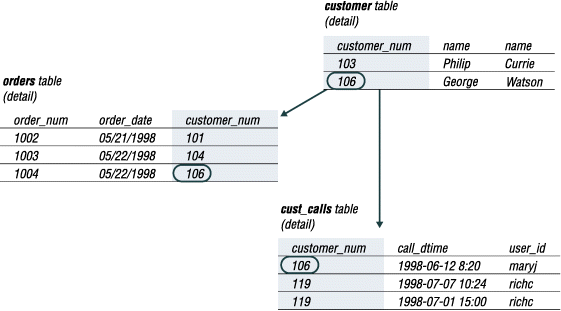Referential integrity
Referential integrity refers to the relationship between tables. Because each table in a database must have a primary key, this primary key can appear in other tables because of its relationship to data within those tables. When a primary key from one table appears in another table, it is called a foreign key.

When you delete a row that contains a primary key or update it with a different primary key, you destroy the meaning of any rows that contain that value as a foreign key. Referential integrity is the logical dependency of a foreign key on a primary key. The integrity of a row that contains a foreign key depends on the integrity of the row that it references-the row that contains the matching primary key.
By default, the database server does not allow you to violate referential integrity and gives you an error message if you attempt to delete rows from the parent table before you delete rows from the child table. You can, however, use the ON DELETE CASCADE option to cause deletes from a parent table to trip deletes on child tables. See The ON DELETE CASCADE option.
To define primary and foreign keys, and the relationship between them, use the CREATE TABLE and ALTER TABLE statements. For more information on these statements, see the Informix® Guide to SQL: Syntax. For information about how to build a data model with primary and foreign keys, see the Informix® Database Design and Implementation Guide.